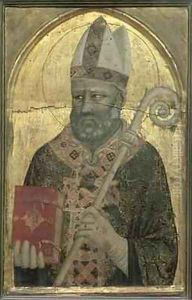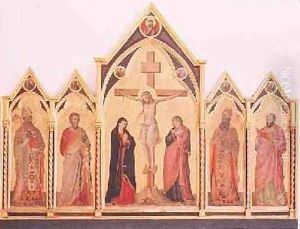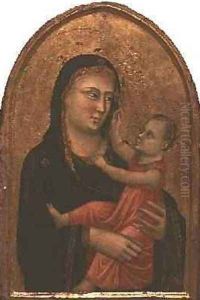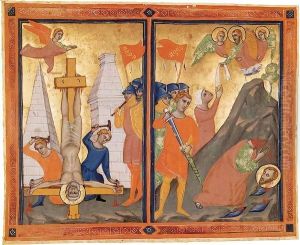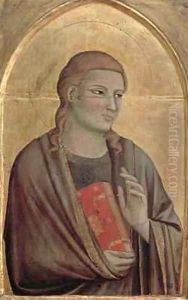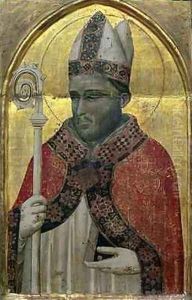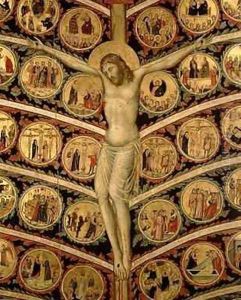Buonaguida Pacino di Paintings
Buonaguida Pacino di, often referred to as Pacino di Bonaguida, was an Italian painter active in the first half of the 14th century in Florence. The exact dates of his birth and death are not known, but his activity is documented between 1303 and 1347. He is considered one of the early practitioners of the Florentine school during the Late Medieval period, which was a precursor to the early Renaissance.
Pacino di Bonaguida's work is characterized by its combination of Byzantine influences with the emerging naturalism that was beginning to develop in Italian art at the time. He was a contemporary of Giotto, whose revolutionary approach to painting had a profound influence on Florentine art. However, Pacino's style remained more conservative and adhered to the Gothic traditions that were dominant before Giotto's innovations.
Not much is known about Pacino's life or training. His earliest known work is the 'Tree of Life' for the Acciaioli family chapel in Florence, which is an illustration of Christ's redemption of humanity and is indicative of the didactic role of religious art during this period. Pacino also illuminated manuscripts, and his most famous illuminated work is the 'Chiarito Tabernacle,' which blends the traditional Italo-Byzantine style with a heightened sense of emotion and narrative detail.
Pacino's other notable works include a panel painting of 'The Virgin and Child Enthroned', and he is also believed to have contributed to the decoration of the choir books for the Florence Cathedral (Santa Maria del Fiore). Despite his somewhat conservative approach, Pacino's work is valuable for its representation of the transition from Medieval to Renaissance art in Florence.
Pacino di Bonaguida's contributions to the art of his time were significant in that he helped carry forward the traditional iconography and techniques while subtly incorporating the more naturalistic styles that were emerging. As such, his works are an important bridge between the periods, and they reflect the complex visual culture of 14th century Florence. Pacino's death is presumed to have occurred in the 1340s, but the exact date remains unknown. His legacy is preserved in the few works that have been attributed to him with certainty, which continue to be studied for their historical and artistic value.
